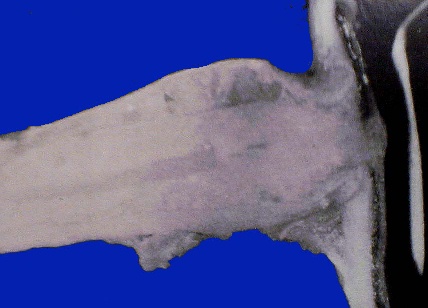
Unlike the fusiform appearance of an optic nerve glioma.
The growth in optic
nerve sheath meningioma tends to fill the subarachnoid
space along the length
of the optic nerve. This give the tumour a railroad-track
appearance on CT scan. |
|
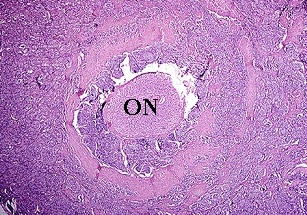
A cross section of optic nerve sheath meningioma
showing compression of the optic nerve (ON). |
|
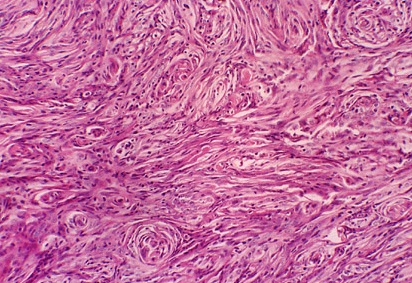
Meningotheliomatous type of meningioma. This is the most
common cell type
seen in all meningioma. The tumour
has large, ill-defined cells with abundant
cytoplasm. Numerous whorls are formed by several flattened
cells wrapped
around a large round cell. Psammomas bodies sometimes
occur within the whorls. |
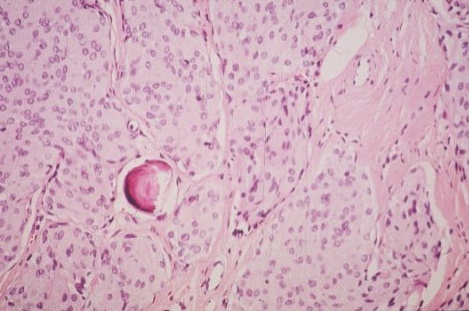
A single psammomas body within the meningioma. Psammomas
body is made up
of spherical calcified meningothelial cells. |
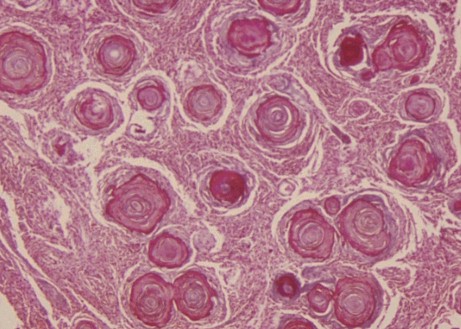
This is a variant characterized by the abundance of psammoma
bodies.These can
form confluent masses between which lie islands of meningothelial
or fibroblastic
-like cells. This is seen less commonly than meningotheliomatous
type. |